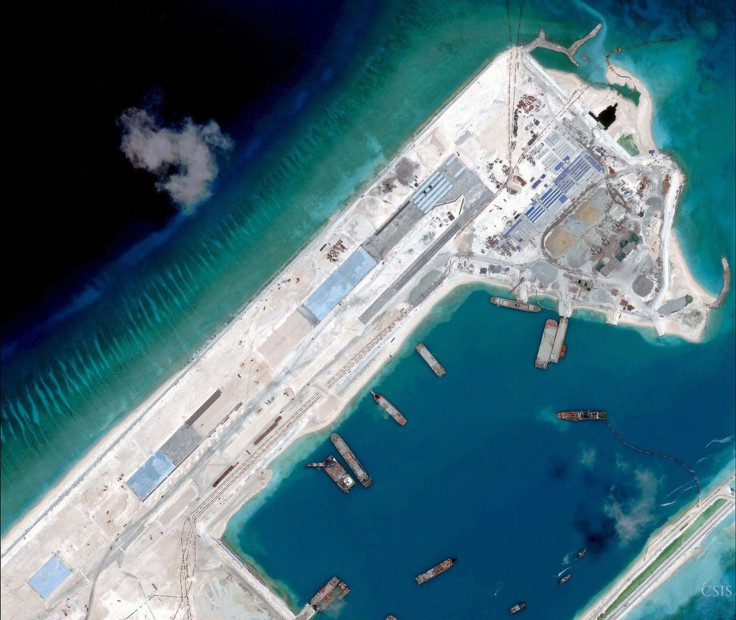China Says US Welcome To Use Civilian Facilities In South China Sea

(Reuters) - The United States and other countries will be welcome to use civilian facilities China is building in the South China Sea for search and rescue and weather forecasting "when conditions are right", China's navy chief has told a senior U.S. officer.
China claims 90 percent of the South China Sea, which is believed to be rich in oil and gas, with overlapping claims from Brunei, Malaysia, the Philippines, Vietnam and Taiwan.
Recent satellite images show China has made rapid progress in building an airstrip suitable for military use in the disputed Spratly Islands and may be planning another.
Those moves, along with other reclamations, have caused alarm around the region and in Washington too, with the issue dominating a summit of Southeast Asian leaders this week, to China's displeasure.
In a teleconference with the U.S. Chief of Naval Operations Jonathan Greenert, China's navy chief Wu Shengli said China's building work in the South China Sea would not affect freedom of navigation or overflight.
"Instead, it will improve the ability in these seas of public services like weather forecasting and maritime search and rescue, fulfilling international obligations to maintain the security of international seas," Wu said, according to a Chinese Defense Ministry statement released late on Thursday.
"(We) welcome international organizations, the United States and relevant countries to use these facilities in the future when conditions are right, to have cooperation on humanitarian search and rescue and disaster relief," Wu added.
The statement cited Greenert as saying he hoped China could explain to countries in the region in a timely manner the aim of the building work. It would also be good for maintaining stability and freedom of navigation if other countries could use such facilities for joint humanitarian operations, he said.
Disputes over how to tackle an increasingly assertive stance by China - an ally of several Southeast Asian states - in the strategic South China Sea make the issue the region's biggest potential military flashpoint.
China this week accused Vietnam, the Philippines and others of carrying out their own illegal building work.
While the militaries of China and the United States have worked hard to improve communication and cooperation, there is still deep mistrust. In 2013, a U.S. guided missile cruiser narrowly avoided a collision with a Chinese warship in the South China Sea.
Wu said U.S. surveillance operations were "totally out of step" with efforts to improve their military relations.
© Copyright IBTimes 2024. All rights reserved.




















